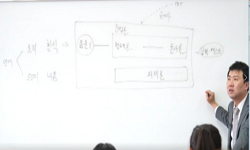It is better and more advantageous to study Korean by comparing it with many other languages from a typological perspective rather than to study Korean for and by itself. Typological studies can help us gauge the objective status of Korean among the l...
http://chineseinput.net/에서 pinyin(병음)방식으로 중국어를 변환할 수 있습니다.
변환된 중국어를 복사하여 사용하시면 됩니다.
- 中文 을 입력하시려면 zhongwen을 입력하시고 space를누르시면됩니다.
- 北京 을 입력하시려면 beijing을 입력하시고 space를 누르시면 됩니다.

유형론과 한국어 연구의 상관관계 -한국어 구문 유형론에서 경계해야 할 것들- = Linguistic Typology and Korean Linguistics -some caution on the Typological Studies of Korean Constructions-
한글로보기https://www.riss.kr/link?id=A108100668
- 저자
- 발행기관
- 학술지명
- 권호사항
-
발행연도
2022
-
작성언어
-
- 주제어
-
KDC
700
-
등재정보
KCI등재
-
자료형태
학술저널
- 발행기관 URL
-
수록면
383-437(55쪽)
- DOI식별코드
- 제공처
- 소장기관
-
0
상세조회 -
0
다운로드
부가정보
다국어 초록 (Multilingual Abstract)
Keeping these in mind, we try to make some remarks for the precise and consistent study of Korean constructions, focused on possessive verb constructions, psych verb constructions, potential passive constructions, and impersonal constructions. In conclusion, the basic sentence pattern of those constructions would rather be [NP1-은 NP2-가 V-어미] or [NP1-이 NP2-가 V-어미] than [NP1-에게 NP2-가 V]. Possessive verbs and psych verbs and potential passive verbs in Korean have many things in common. First, they are all two-place predicates. Second, they require NP1 as a subject and NP2 as an object whose semantic roles are possessor/experiencer and theme, respectively. If these new discoveries were turned out to be true and were reported to alignment typology, we could establish a new alignment typology where Korean is described as a ‘split-O pattern’ language.
Last but not least, we can say that there are impersonal constructions in Korean by referring to the typological studies on the impersonal constructions in indo-european languages. For example, ‘비(가) 오다(rain)’ is a vP, or a support/ light verb construction in which the constituent ‘비(가)’ is not a true subject, but a complement as a predicative noun.
It is better and more advantageous to study Korean by comparing it with many other languages from a typological perspective rather than to study Korean for and by itself. Typological studies can help us gauge the objective status of Korean among the languages of the world and simultaneously to recognize the generality/universality and particularity/peculiarity of Korean. But we should not take a leap of faith in typological researches and always caution ourselves against the distortions of Korean through the blind application of results of typological studies to Korean.
Keeping these in mind, we try to make some remarks for the precise and consistent study of Korean constructions, focused on possessive verb constructions, psych verb constructions, potential passive constructions, and impersonal constructions. In conclusion, the basic sentence pattern of those constructions would rather be [NP1-은 NP2-가 V-어미] or [NP1-이 NP2-가 V-어미] than [NP1-에게 NP2-가 V]. Possessive verbs and psych verbs and potential passive verbs in Korean have many things in common. First, they are all two-place predicates. Second, they require NP1 as a subject and NP2 as an object whose semantic roles are possessor/experiencer and theme, respectively. If these new discoveries were turned out to be true and were reported to alignment typology, we could establish a new alignment typology where Korean is described as a ‘split-O pattern’ language.
Last but not least, we can say that there are impersonal constructions in Korean by referring to the typological studies on the impersonal constructions in indo-european languages. For example, ‘비(가) 오다(rain)’ is a vP, or a support/ light verb construction in which the constituent ‘비(가)’ is not a true subject, but a complement as a predicative noun.
동일학술지(권/호) 다른 논문
-
- 국어학회
- 이정훈 ( Lee Chung-hoon )
- 2022
- KCI등재
-
- 국어학회
- 신은수 ( Shin Eun-su )
- 2022
- KCI등재
-
- 국어학회
- 허세문 ( Hoe Se-moon )
- 2022
- KCI등재
-
- 국어학회
- 문현수 ( Moon Hyun-soo )
- 2022
- KCI등재




 KISS
KISS







